Media Vision
Oakland, CA 94608
United States

March 26, 2021 - Public places of gathering, from churches to movie theaters and event spaces, need to be accessible to everyone. The Americans with Disabilities Act (ADA) contains strict standards for audiovisual equipment that aim to ensure inclusivity for all. However, many establishments throughout the country fail to meet these standards today.
In this post, we'll cover the basics of assistive listening, the standards outlined in the ADA, and how you can ensure compliance for your venue.
What is Assistive Listening?
Assistive listening is a type of audiovisual technology that allows persons with a hearing impairment to participate in events and gatherings.
There are approximately 600,000 Americans who live with a severe hearing disability, and a further 6 million with a partial hearing disability. Fortunately, assistive listening technology comes in many different forms. This gives every type of building or venue at least one option to consider when it comes to making sure they're ADA compliant.
What are Assistive Listening devices?
Assistive listening devices can be found in movie theaters, conference centers, courtrooms, lecture halls, and houses of worship all over the country. Since they're relatively discreet, the chances are that if you have never needed to request one, you probably won't have noticed them. If you work in a public venue then you probably know that assistive listening systems aren't always perfect. They can be inconsistent and difficult to use.
Thankfully, Media Vision has a catalog of assistive listening devices if your current system is proving ineffective or difficult to maintain.
How do Assistive Listening devices work?
Assistive listening devices can be broken down into three categories. These are:
- Induction Loop Systems
These systems, sometimes known as 'hearing loops,' use an electromagnetic field to transmit sound. The T-coil inside of a cochlear implant or hearing aid will pick up the signal from this field and amplify it. You may have seen signs showing a picture of an ear with the letter ‘T' on them. This is to let people know that an Induction Loop system is in place. These systems are effective but difficult and costly to install.
- Infrared Systems
These systems transmit infrared (IR) light waves to users wearing IR receivers. Users will need to be within a line of sight to the receivers for them to work. IR systems are reliable but somewhat expensive.
- FM Frequency Systems
These are the most popular systems in the US, due to their affordability and ease of installation. They work by broadcasting an FM frequency, much like a regular radio. This is picked up by users wearing an FM receiver.
For more advice on choosing a system and becoming ADA compliant, get in touch with us. Alternatively, you can check out our handy assistive listening guide.
Does my venue need an Assistive Listening system?
Some venues are exempt from compliance with the ADA standards for assistive listening. However, you will need to be compliant if your venue meets the following criteria:
- Audible communication is integral to the use of the space
- The space uses an audio amplification system
- The space has an occupant load of 50 people or more
- The space has fixed seating
There are some exceptions to these rules (for example, courtrooms require ADA compliance regardless of their occupant load). But if your venue doesn't meet all of these criteria, you likely don't need to do anything.
If your venue does meet all of these criteria, you will need to invest in an assistive listening system, if you don't already have one. If you run a smaller venue, you might not need much in terms of equipment or infrastructure. However, you will still be legally obligated to provide equipment if and when it's requested.
The amount you will need is determined by the seating capacity of your venue. The more seats in your venue, the more assistive listening equipment you'll need.
If you need help figuring out whether or not you need to be ADA compliant, or if you need to know how much equipment your venue needs, contact our team for advice or use our ADA Compliance Calculator.
What are the Penalties for Non-Compliance?
Federal law allows for fines of up to $75,000 for a first violation and up to $150,000 for additional violations.
However, local and state law may require additional, higher standards of accessibility than is specified in the ADA. We recommend getting in touch with an attorney in your state if you're unsure about your local standards.
ADA Standards for Assistive Listening
There are several technical standards that need to be met to ensure compliance. These standards have been designed to ensure that the user's experience is simple and problem-free. They are as follows:
- Receiver Jacks
Receivers need to include a 1/8 inch (3.5 mm) standard mono jack.
- Receiver Hearing-Aid Compatibility
Receivers need to interface with telecoils (T-coils) in hearing aids through the provision of neckloops.
- Sound Pressure Level
Assistive listening systems need to provide a minimum sound pressure level of 110 dB and a maximum of 118 dB. The volume control range needs to be at least 50 dB.
- Signal-to-Noise Ratio
The signal-to-noise ratio for internally generated noise in assistive listening systems needs to be 18 dB minimum.
- Peak Clipping Level
Peak clipping can't exceed 18 dB of clipping relative to the peaks of speech.
In addition to these technical standards, ADA guidelines also require the appropriate signage, letting people know that an assistive listening system is in place. The signage must feature the International Symbol of Access for Hearing Loss.
Media Vision's Assistive Listening solutions
There are a lot of things you need to consider to ensure you meet the ADA's strict standards for compliance.
If you run a venue and need a fast, easy solution, our fixed rack-mount transmitter can help. All you will need is a single XLR or Dante input and some receivers.
If you run a larger venue, you can boost the FM signal with one of our antennas. We also offer assistive listening solutions for mobile applications, such as tour groups. You can browse our range of portable, battery-powered devices here.






